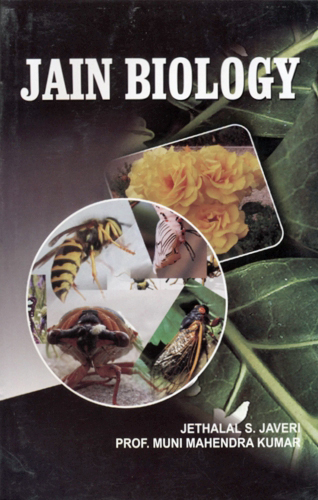Sex Expression: The sex expression of plants is based on whether one or both of the sex organs [see flower above] are in the same flower. There are three main types e plants with functional stamens and functional pistils in the same flower—the perfect flower—
Apple, pear, cabbage etc.; plants with functional stamens and functional pistils in separate flower on the same plant—banana, coconut, watermelon etc.; plants with functional stamens and functional pistils in separate flowers on different plants—date palm, papaya, spinach etc.
POLLINATION is the first step in the formation of seeds. It involves the transfer of pollen grains from the anther to the stigma of a flower of the same species. External agents like wind and insect do the job. Less frequent are birds and water. Grasses and palms possess wind—pollinated flowers. Maize has wind-pollinated flowers. Chief pollinating insects are bees, butterflies and moths. Sun flower is insect-pollinated. Only a very few plants get pollinated by water as it is most unsafe medium to survive. Birds and bats also bring about pollination.
Although most plants prefer cross pollination some, with small closed flowers, cannot avoid self-pollination.
FERTILIZATION: the fusion of male and female gametes is called fertilization. The fertilized egg cell gets surrounded by a cell wall and becomes an oospore. By repeated divisions it develops into an embryo with plumule, radicle and cotyledons. The ovule becomes the seed and ovary, the fruit.
The FRUIT develops from the ovary. Its function is to protect and nurture young seeds and to disperse them when mature. It may possess one seed or several ones. The pericarp which covers the seeds may be pulpy or dry.
In cereals like maize, rice, wheat and in all grasses, the fruits have only one seed with a dry pericarp. Each fruit functions like a seed. In the fruits of Mango, Peach and Walnut, the pericarp is divided into three layers—outer skin, middle pulpy mesocarp and inner hard endocarp which covers a singular seed. In the fruits of tomato, chickoo and guava, the pericarp is divided into outer skin which" covers the pulp with many seeds scattered within. Bananas are seedless as the plants get propagated through rhizome and not through the seeds. In peas, beans, and other pulses, the fruit has a dry pericarp with several seeds. In groundnut, soon after fertilization, the flower-stalk goes underground and further development takes place below the ground level. The fruit which is a legume, like peas and beans, has a hard pericarp and looks beaded due to constructions between the seeds. After the seeds are mature, they get separated from the parent and germinate into new offsprings. External agents like wind, water and animals disperse them to avoid competition for space, food and light. Some seeds, as of cotton, are provided with hairy outgrowth which help them fly long distances. Some seeds, as of drumstick, have wings. Seeds which are dispersed by water as coconut have a waterproof coat and float to long distances. In lotus, small one-seeded fruits by spongy top shaped thalamus which floats in ponds and lakes. Birds eat berries pulp but viscid seeds stick to their beaks, they wipe their beaks on tree trunks where the seeds are left to germinate on the? tree trunks and thus become parasites.
SEED STRUCTURE AND GERMINATION: A seed possesses an embryo or the juvenile plant and is covered by one or two seed coats. The embryo consists of a primary axis within embryonic root or radicle, at one end and the embryonic shoot or the plumule with a pair of tiny leaves at the other end. It has one or two cotyledons also. Seeds store reserve foods as carbohydrates, proteins and fats.
The embryo in the seed is a young plant in an inactive state. Seeds remain viable, i.e., capable of germination for a period of 10 to 25 years (dormant period), if stored in a cool dry place. Under suitable conditions of temperature water and oxygen, the embryo grows into a tiny plant called the seedling.
Germination commences by entry of water which activates dehydrated enzymes in the storage cells and the insoluble reserves are converted Into soluble forms (digestion). The digested food is absorbed. Soaked in water, the seed swells and the seed coat bursts open. The radicle is the first to grow downwards into the primary root followed by the growth of the plumule into a shoot above the ground. Now the roots absorb nutrition and green leaves manufacture food for the seedling. The new plant begins to function.
We have seen that in sexual method of propagation, the sex organs of the flower are involved in pollination and fertilization, resulting in the formation of seeds which on germination will produce new plants. Many morphological and biochemical changes take place during seed formation. In general seed formation in angiosperms involves the following events:
- Formation of stamens and pistils in the flower bud.
- The anthesis or opening of buds,signaling the maturity
- Pollination—transfer of pollen grains from the stamens (anthers) to the pistils (stigma), germination of the pollen and formation of pollen tube.
- Fertilization of the egg-cell in the ovule with one male nucleus and fusion of the polar nuclei with this.
- Growth of the fertilized egg-cell and its differentiation into an embryo and development of seed coat, to protect, it from drying out,, mechanical injury and so on.
Thus, the embryo is the end result of the sexual cycle. It undergoes continuous morphological and physiological changes during seed development. It starts as a single cell, grows rapidly and becomes amass of indifferentiated cells in the early stages. As the growth continues, it is differentiated into an embryonic axis with growing points at each end one for the shoot and the other for the root.
 Jethalal S. Zaveri
Jethalal S. Zaveri
 Prof. Muni Mahendra Kumar
Prof. Muni Mahendra Kumar

